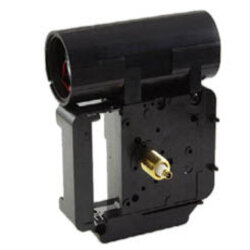+1 888 123 4567

Trending Electronic Clock Movements
Regardless, the feature needed come down to the size of the angle subtended by each hand at every moment. Clock movements are typically described as motors, and the terms are practically interchangeable. The force behind a mechanical one was either a coiled springtime or a hanging weight causing a flywheel to transform. To stop "freewheeling," or runaway rotation, pendulums and escapement devices were utilized, developing an oscillation that had an especially obtained frequency.
The contemporary digital motion obtains its power from a quartz crystal shaking at a details regularity that corresponds to the geometry of the crystal. With a voltage decrease applied to the crystal, it releases a series of pulses at the powerful frequency. Building up the number of pulses right into an electronic register keeps track of the amount of expired time. This running total amount of pulses is a high multiple of the seconds and minutes needed for telling time, so software program subdivides the number down to something useful.
The mechanical analog of this procedure is accomplished utilizing a network of gears in particular ratios. In both the electronic and also mechanical strategy, the development of every second triggers the previously owned to subtend another 6 degrees of arc. Another register gathers seconds right into minutes, as well as a third counts mins into hrs.
When the corresponding threshold is crossed, the loved one hand is progressed another tick. Eventually, each register obtains reset back to zero, establishing an overall cycle when every little thing begins again once again. This "eventually" generally indicates 12 hrs, however there's no reason it can't be extended well beyond that. It's pretty much say goodbye to difficult than setting a parameter in the activity software application.
So, it's simple to double the cycle to 24-hour (which would call for a different dial), but easily offered are motors that head out a week and even a month. These last 2 expansions call for an extra hand to point to the day of the week or the day in the month, specifically. Yet a various type of expansion makes use of a cycle of 24 hours as well as 50 mins, which corresponds to the duration of the lunar transformation around the planet.
For this reason, it can be utilized to show the present degree of the trend (if calibrated to your area of the sea). There are also movements for showing weather phenomena, such as temperature or humidity. Unlike the trend degree, which is a periodic reappearance like time, such phenomena vary within a specific array, as well as the worths need to be digitized from sensing unit input.
The matching dial is adjusted to make sure that the hand revolves with less than one full circle. Note that digital clock movements can so much greater than their mechanical counterparts due to the software application aspect. The physical positioning of the hand or hands is the same for both, however the derivation of position is an order of magnitude a lot more complicated for the mechanical version.
Movements show feature sets, and some attributes we have not even defined. Bear in mind that common electric motors are made for clocks less than 12-14 inches in size, as their torque restriction can not revolve longer min hands. It is possible to build larger clocks (align to 6 feet across!), but you have to purchase the high-torque variation of the motion the attribute set of which you intend to carry out.
Most electric motors operate on batteries (usually AA or C), though various other power alternatives are in some cases readily available. You can also locate uniqueness such as pendulums or chimes. There is no end to the satisfaction one can derive from modern-day digital clock movements.
clock mechanism